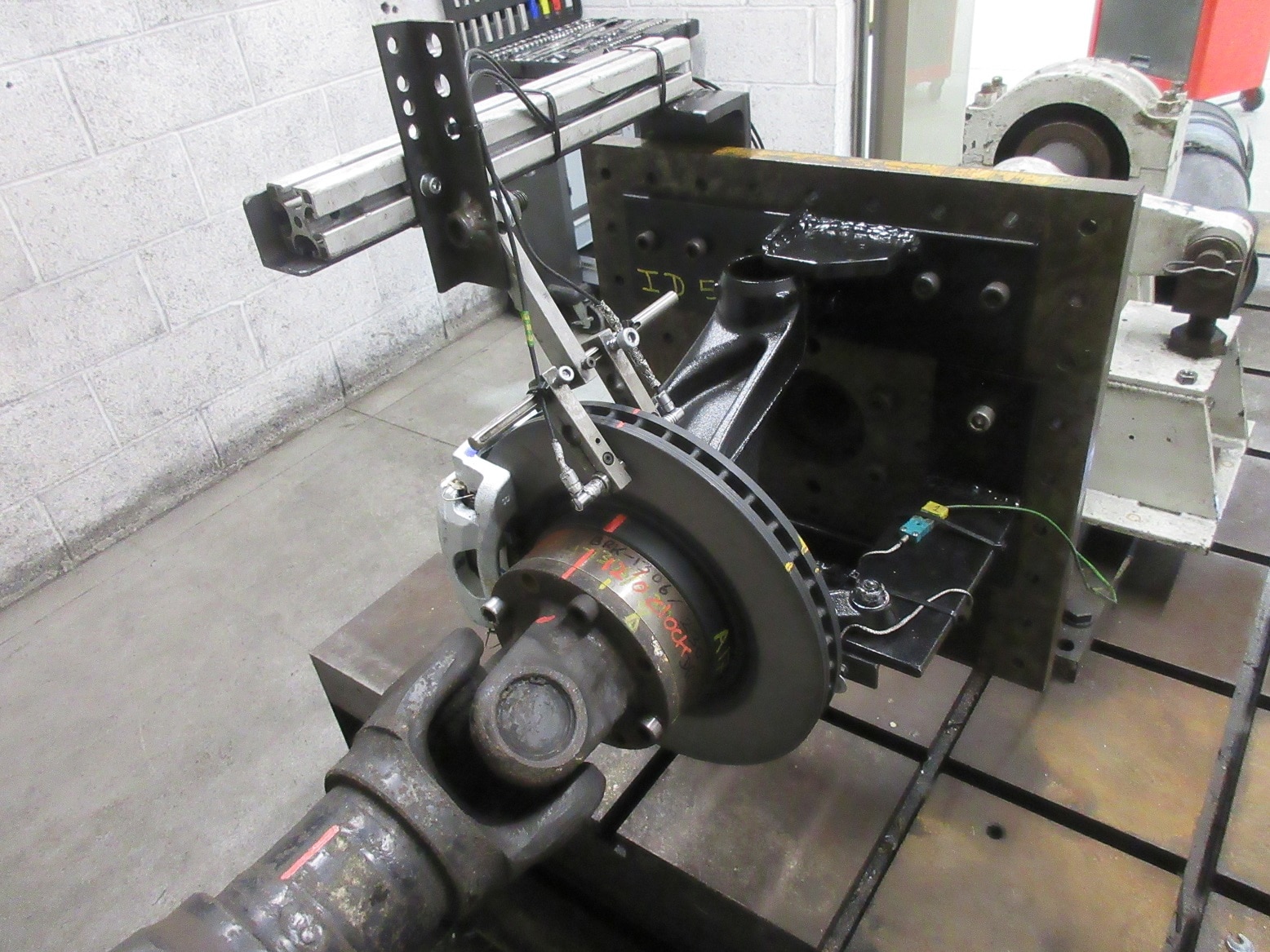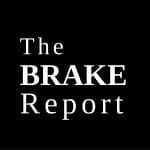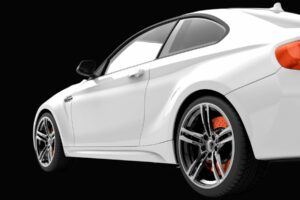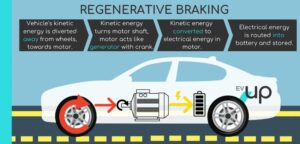Sign up for our weekly email to stay on top of the latest news and insights!
This is the fourth installment of a four-part article by: Kenneth Mendoza, Project Engineer, HiL Systems, Electronics in Applus IDIADA and Fabio Squadrani, Senior Manager, Braking Systems in Applus IDIADA on developing a control module for simulating hybrid regenerative braking on a brake dynamometer. This article and deals with the implementation of regenerative braking on a brake dynamometer. This part will introduce the validation process, where vehicle- and dynamometer-based test results were directly compared.
Regenerative Braking Testing on Dynamometer (Part 1 of 4)
Dynamometer Simulation of Regenerative Braking (Part 2 of 4)
Simulation of Regen Braking on a Dyno (Part 3 of 4)
Validation
Brake vehicle testing
In order to obtain relevant data from regenerative braking two different vehicles have been used as reference. Vehicles have been selected in order that their regenerative braking regulation is different, meaning that one of them applies parallel regenerative braking other one has serial-parallel regenerative braking with multiple levels of regeneration available to be chosen. This brings the possibility to observe different regenerative braking behavior from the same topology of vehicle electrification. Both vehicles are available in the European market.
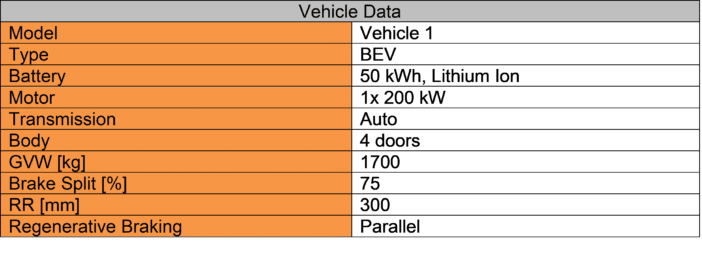
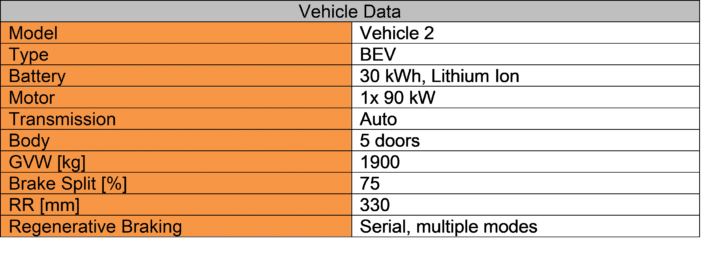
Performed Tests
In order to characterize the hybrid braking systems of both vehicles and to obtain data to be used as a reference during the validation tests to be conducted in dbDyno, two tests have been performed on both vehicles. The chosen tests are pedal feeling and blending characterization tests. The general idea for the feeling test is to obtain the pedal response to a linearly increasing deceleration during brake applications whereas for the blending test the objective is to obtain the contribution of each braking system for different deceleration situations.
Pedal feeling tests are used for obtaining the dynamic pedal feeling characterization of vehicles while braking. Generally during this type of tests brake applications are performed in a way that the deceleration obtained increases at a constant rate until reaching a target value. Afterwards deceleration is correlated with pedal travel and pedal effort.
Many different pedal feel procedures can be applied. The one chosen for this project consists in performing several stops at different speeds applying progressive decelerations up to 1g.
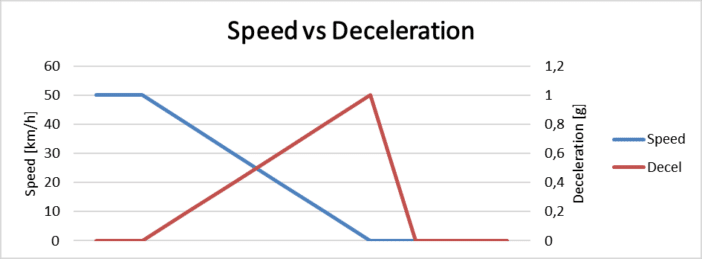
Brake pedal feeling is an important topic in hybrid braking tuning because depending on the regenerative strategy being applied problems can arise if the system is not properly designed or adjusted, more specifically in the transition zones from regenerative to friction-based braking and vice versa.
Blending characterization tests are performed on vehicles with regenerative braking systems in order to obtain the contribution of each braking system (friction-based and regenerative) in different deceleration conditions.
Generally, these tests consist in performing a series of brake applications both in neutral and in drive mode gears and its results allow to obtain the percentage of regenerative contribution with respect to the total deceleration, given that in neutral mode the regenerative brake does not actuate and all the deceleration is provided by the friction-based braking system whereas in drive mode both systems contribute simultaneously to deceleration.
In detail, the regenerative braking contribution is defined as the ratio between the regenerative braking torque and the whole braking torque. The regenerative braking torque is estimated by the difference between the brake pressure of a brake interval with a regenerative contribution and the brake pressure of a brake interval without regenerative contribution:

Regenerative braking estimation is calculated for each driving mode and each vehicle deceleration tested. The whole braking torque is calculated from the Neutral mode for each vehicle deceleration tested.
Vehicle 1 – Test Data From the analysis of the data of vehicle 1, the typical behaviour of parallel regenerative braking systems regarding blending is shown: the representation of both neutral and drive mode characteristics is fairly linear and of the same slope, which means that regenerative only works as an offset providing a constant deceleration value when active.
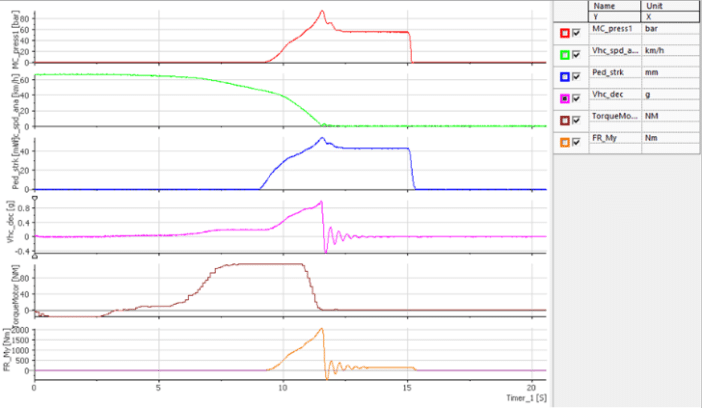
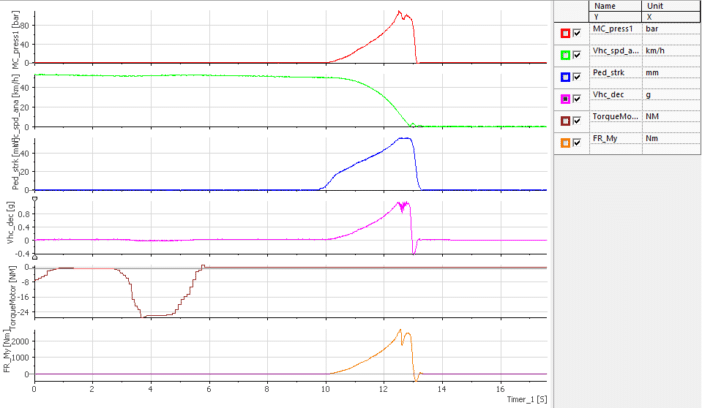

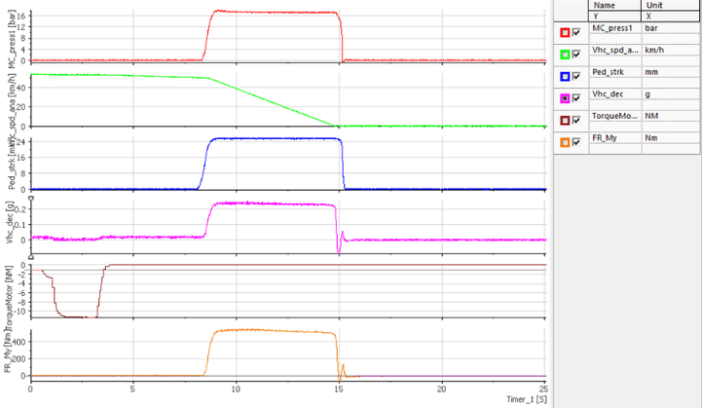
Vehicle 2 adds some more complexity to the analysis as there are more than two driving modes that need to be taken into consideration: we can find one mode (D3) wich prioritises more energy recovery than Mode 0 (D0). In other words, D3 is more eco and D0 reflects standard driving condition.


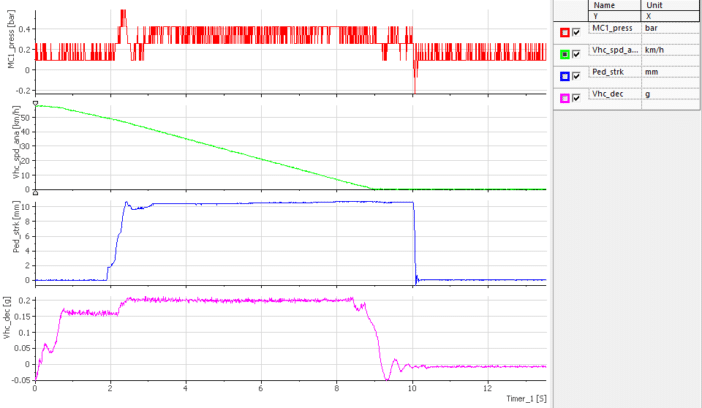
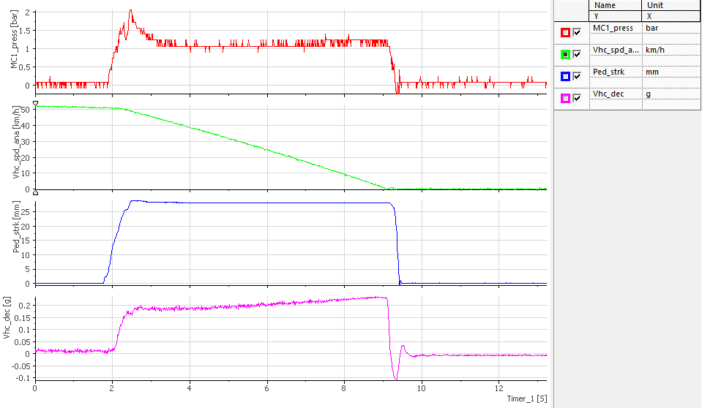
Validation tests on brake dynamometer
Taking into consideration the specifications of Vehicle 1 and Vehicle 2, and given that the Inertia Simulation module has been already proven to work properly, the verification of Regenerative Braking Capabilities will be performed using Inertia Simulation. A fixed inertia of 84kgm2 is used.
From the tests conducted in vehicle it has been decided to use the blending characterization results as a reference to be reproduced in the brake dynamometers, as it is the test were the contribution of the regenerative braking can be quantified easier.
Vehicle 1 has been tested on dyno using its original torque signal from the motor as it was available from the CAN bus, only taking into account geometric parameters such as the gear ratio. The entire test consists in 32 brake applications: 8 per driving mode (neutral and drive modes) at two different initial speeds (50 and 100 km/h). As the interesting part of this validation tests consists in verifying the deceleration, speed and pressure profiles, only some of the most relevant brake applications are highlighted.
The left side graphs show the obtained results using Regenerative Braking Capabilities whereas the right side ones show the results without any regenerative contribution, equivalent to the vehicle’s neutral gear. The same level of deceleration is obtained in each figure but with notoriously lower pressure and friction braking torque when Regenerative Braking Capabilities are active. Note that this vehicle had parallel regenerative system and torque blending cannot be appreciated.

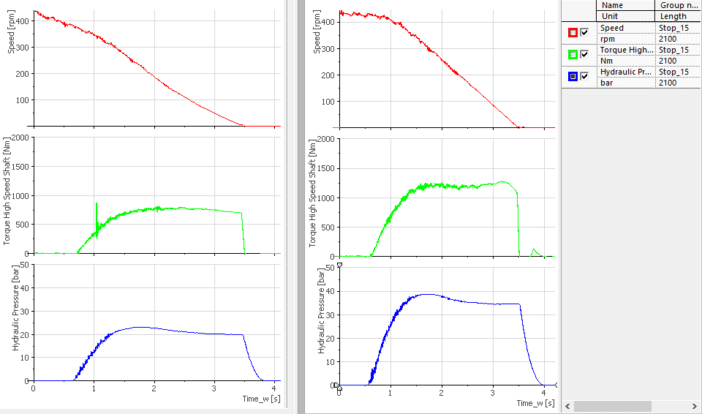
For Vehicle 2 the entire test consists in 48 brake applications: 8 per driving mode (neutral, drive 0 and drive 3 modes) at two different initial speeds (50 and 100 km/h). As the interesting part of this validation tests consists in verifying the deceleration, speed and pressure profiles, only some of the most relevant brake applications are highlighted.
The left side graphs show the obtained results using Regenerative Braking Capabilities whereas the right side ones show the results without any regenerative contribution, equivalent to the vehicle’s neutral gear. The same level of deceleration is obtained in each figure but with notoriously lower pressure and friction braking torque when Regenerative Braking Capabilities are active. In this vehicle it is possible to observe the torque blending when the regenerative system is actuating.
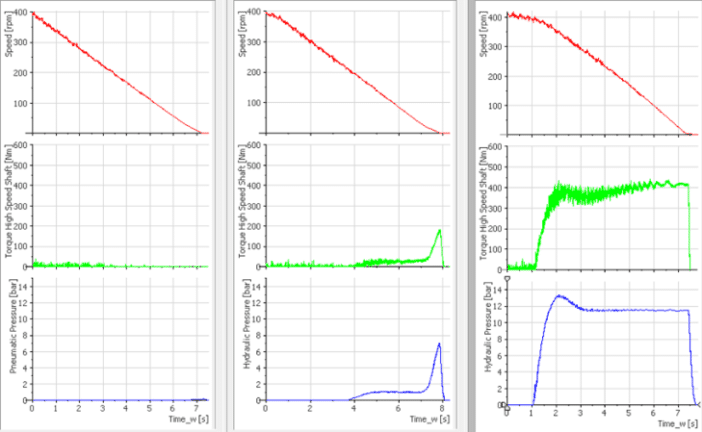
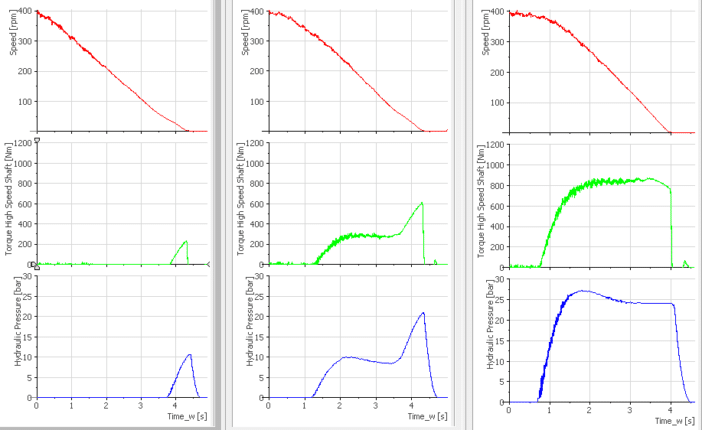
Conclusion
The project has been successfully concluded, validating brake dynamometer regenerative testing capabilities, using vehicle data testing on proving ground.
It is important to note that this objective does not include the simulation of regenerative brake logics, as this is not the primary goal for brake dynamometer testing at this stage.
Together with that, dynamics of the electric motor must be evaluated in a passenger car brake dynamometer to confirm that the torque profiles obtained from the motor fully match with vehicle profiles. Further tests must be performed but the solutions obtained up to date look promising for current and future applications.
About Applus IDIADA
With more than 25 years of experience and 2,450 engineers specializing in vehicle development, Applus IDIADA is a leading engineering company providing design, testing, engineering, and homologation services to the automotive industry worldwide.
Applus IDIADA is located in California and Michigan, with further presence in 25 other countries, mainly in Europe and Asia.

